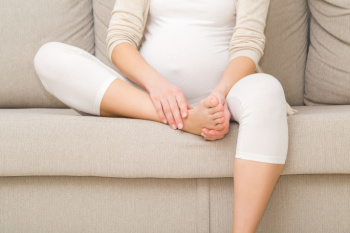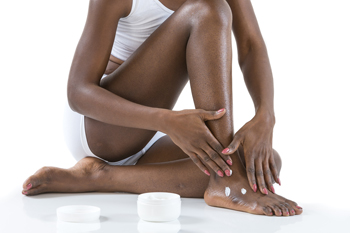

Suffering from a foot stress fracture can be frustrating and challenging, especially when it disrupts your daily activities and mobility. The healing time for a foot stress fracture can vary depending on several factors, including the severity of the fracture, your overall health, and adherence to treatment protocols. Generally, foot stress fractures take approximately six to eight weeks to heal, but in some cases, it may take longer for complete recovery. During this period, it is wise to follow your podiatrist’s recommendations diligently, which may include rest, immobilization with a cast or boot, and avoiding weight-bearing activities. Maintaining a healthy lifestyle with proper nutrition and staying hydrated can support the healing process. As tempting as it may be to return to normal activities, rushing the healing process can prolong recovery and increase the risk of re-injury. If you have a stress fracture, it is strongly suggested that you are under the care of a podiatrist who can offer you appropriate treatment options.
Stress fractures occur when there is a tiny crack within a bone. To learn more, contact Dr. Edward D. Hutson from Easton, PA. . Our doctor can provide the care you need to keep you pain free and on your feet.
How Are They Caused?
Stress fractures are the result of repetitive force being placed on the bone. Since the lower leg and feet often carry most of the body’s weight, stress fractures are likely to occur in these areas. If you rush into a new exercise, you are more likely to develop a stress fracture since you are starting too much, too soon. Pain resulting from stress fractures may go unnoticed at first, however it may start to worsen over time.
Risk Factors
Stress fractures do not always heal properly, so it is important that you seek help from a podiatrist if you suspect you may have one. Ignoring your stress fracture may cause it to worsen, and you may develop chronic pain as well as additional fractures.
If you have any questions, please feel free to contact our offices located in Easton, and Northampton, PA . We offer the newest diagnostic and treatment technologies for all your foot care needs.

Pregnancy is a journey filled with excitement and anticipation, but it can also bring its own set of challenges, including foot pain. Expecting mothers often find themselves dealing with discomfort and swelling in their feet, making each step a bit more challenging. However, there are ways to manage this discomfort and make the journey smoother. This can begin with investing in comfortable and supportive footwear. Opt for shoes with low heels and ample cushioning to provide relief to your tired feet. Additionally, elevating your feet whenever possible can help reduce swelling and alleviate pressure. Another helpful tip is to incorporate gentle exercises into your daily routine, such as walking or swimming, to improve circulation and strengthen your feet and ankles. Remember to stay hydrated and maintain a balanced diet to support overall health and reduce swelling. Lastly, do not hesitate to seek support from your podiatrist if foot pain becomes severe or persistent. This type of doctor can offer personalized advice and recommend safe treatment options to help you manage foot pain effectively throughout your pregnancy, If you are experiencing any foot discomfort during your pregnancy, it is suggested that you consult a podiatrist who can provide you with relief options.
Pregnant women with swollen feet can be treated with a variety of different methods that are readily available. For more information about other cures for swollen feet during pregnancy, consult with Dr. Edward D. Hutson from Easton, PA. . Our doctor will attend to all of your foot and ankle needs.
What Foot Problems Can Arise During Pregnancy?
One problem that can occur is overpronation, which occurs when the arch of the foot flattens and tends to roll inward. This can cause pain and discomfort in your heels while you’re walking or even just standing up, trying to support your baby.
Another problem is edema, or swelling in the extremities. This often affects the feet during pregnancy but tends to occur in the later stages.
How Can I Keep My Feet Healthy During Pregnancy?
If you have any questions please feel free to contact our offices located in Easton, and Northampton, PA . We offer the newest diagnostic and treatment technologies for all your foot and ankle needs.

Cuboid syndrome, a relatively uncommon but painful condition, occurs when the cuboid bone in the foot becomes displaced or irritated, leading to discomfort and limited mobility. The cuboid bone is located on the outer side of the foot, near the middle, and plays an important role in maintaining foot stability and movement. Diagnosis of cuboid syndrome involves a thorough physical examination by a podiatrist, focusing on the foot's range of motion, tenderness, and specific movements that reproduce pain. Imaging tests such as X-rays or MRI scans may be utilized to rule out other potential causes of foot pain and confirm the diagnosis. Symptoms of cuboid syndrome typically include pain on the outer side of the foot, difficulty walking or bearing weight, swelling, and a sensation of instability or shifting in the midfoot area. In severe cases, manipulation or mobilization techniques by a podiatrist may be necessary to realign the cuboid bone and alleviate symptoms. If you have pain in this part of your foot, it is suggested that you visit a podiatrist who can successfully diagnose and treat cuboid syndrome.
Cuboid syndrome, also known as cuboid subluxation, occurs when the joints and ligaments near the cuboid bone in the foot become torn. If you have cuboid syndrome, consult with Dr. Edward D. Hutson from Easton, PA. . Our doctor will assess your condition and provide you with quality foot and ankle treatment.
Cuboid syndrome is a common cause of lateral foot pain, which is pain on the outside of the foot. The condition may happen suddenly due to an ankle sprain, or it may develop slowly overtime from repetitive tension through the bone and surrounding structures.
Causes
The most common causes of cuboid syndrome include:
Symptoms
A common symptom of cuboid syndrome is pain along the outside of the foot which can be felt in the ankle and toes. This pain may create walking difficulties and may cause those with the condition to walk with a limp.
Diagnosis
Diagnosis of cuboid syndrome is often difficult, and it is often misdiagnosed. X-rays, MRIs and CT scans often fail to properly show the cuboid subluxation. Although there isn’t a specific test used to diagnose cuboid syndrome, your podiatrist will usually check if pain is felt while pressing firmly on the cuboid bone of your foot.
Treatment
Just as the range of causes varies widely, so do treatments. Some more common treatments are ice therapy, rest, exercise, taping, and orthotics.
If you have any questions, please feel free to contact our offices located in Easton, and Northampton, PA . We offer the newest diagnostic and treatment technologies for all your foot care needs.

Ensuring foot health is essential for overall well-being, as the feet bear the brunt of daily activities and support the body's weight. Several methods can help maintain pain-free feet. Wearing properly fitting shoes with adequate support and cushioning is important in reducing the risk of foot conditions, such as plantar fasciitis and bunions. Regularly inspecting the feet for any signs of irritation, blisters, or abnormalities allows for early detection and prompt treatment of potential issues. Practicing good foot hygiene, including washing and drying the feet thoroughly, helps prevent infections and fungal growth. Engaging in foot exercises, such as toe stretches and ankle rotations, improves flexibility and strengthens the muscles, enhancing foot stability and mobility. Additionally, maintaining a healthy weight reduces stress on the feet and lowers the risk of developing foot-related problems. If you are experiencing any type of pain in the feet, it is suggested that you consult a podiatrist for an exam, diagnosis, and treatment options.
Everyday foot care is very important to prevent infection and other foot ailments. If you need your feet checked, contact Dr. Edward D. Hutson from Easton, PA. . Our doctor can provide the care you need to keep you pain-free and on your feet.
Everyday Foot Care
Often, people take care of their bodies, face and hair more so than they do for their feet. But the feet are a very important aspect of our bodies, and one that we should pay more attention to. Without our feet, we would not be able to perform most daily tasks.
It is best to check your feet regularly to make sure there are no new bruises or cuts that you may not have noticed before. For dry feet, moisturizer can easily be a remedy and can be applied as often as necessary to the affected areas. Wearing shoes that fit well can also help you maintain good foot health, as well as making it easier to walk and do daily activities without the stress or pain of ill-fitting shoes, high heels, or even flip flops. Wearing clean socks with closed shoes is important to ensure that sweat and bacteria do not accumulate within the shoe. Clean socks help to prevent Athlete’s foot, fungi problems, bad odors, and can absorb sweat.
If you have any questions please feel free to contact our offices located in Easton, and Northampton, PA . We offer the newest diagnostic and treatment technologies for all your foot and ankle needs.